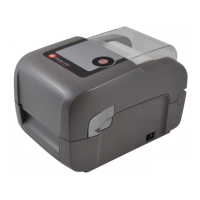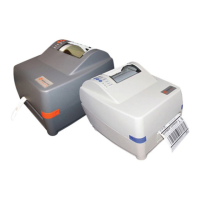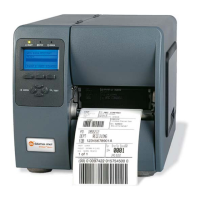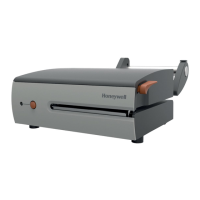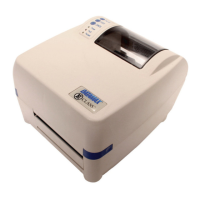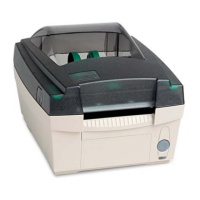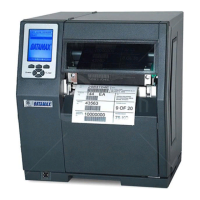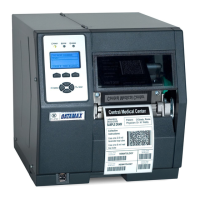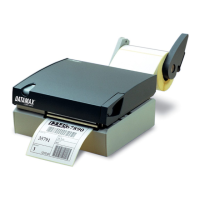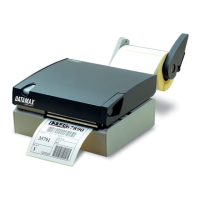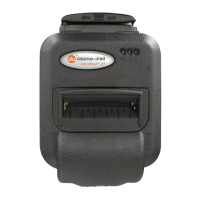Appendix G – Bar Code Details
246 Class Series 2 Programmer’s Manual
In the table above, row/column/error correction selection index (hi) values increasingly
large do not necessarily result in the ability to encode more data.
Byte Compaction Mode (j = 1)
A value of 1 forces Byte Compaction. The compaction ratio is six 8-bit bytes of data
compressed into a 5-symbol codeword. See the table above for the maximum data
allowed for any row/column/error correction selection index (hi).
Macro Character Substitution Disable (k=1)
By default Macro Character Substitution is enabled (k=0). When enabled, Byte
Compaction has priority over Macro Character Substitution. When Macro Character
Substitution is enabled, the data stream header and trailer are compacted when they
conform to the following forms:
[)>
R
S
05
G
S
data
R
S
E
o
T
or
[)>
R
S
06
G
S
data
R
S
E
o
T
where:
data may not contain adjacent bytes with values
R
S
or
G
S
(
R
S
= 30
10
, 1E
16
and
G
S
= 29
10 ,
1D
16
and
E
o
T
= 4
10
,4
16
)
Functions Not Supported
• General Purpose Extended Channel Interpretations, including Code-128 emulations
• Structured Append
• Reader Initialization Symbol Generation
• Module shaving
W1Z: Micro PDF417 with Byte Count Specifier
Specified Length – The upper case Z identifies a Micro PDF417 bar code with a 4-digit
string length specifier. This allows values 0x00 through 0xFF to be included within the
data strings without conflicting with the DPL format record terminators. The four-digit
decimal data byte count immediately follows the four-digit column position field. This
value includes all of the data following the byte count field, but does not include itself.
<STX>L
D11<CR>
1W1Z0000000150100001214000pdf<0x0D>417
121100000000100Barcode W1Z<CR>
E
Barcode W1Z
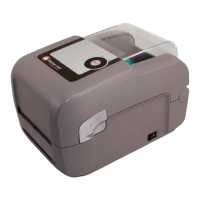
